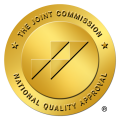Advantages in Telehealth and How They Impact Your Facility
As technology advances, so does medicine. According to 2021 telehealth data from McKinsey & Company, the use of telehealth increased to over thirty-eight times what they were in 2019.1 Although the main driver pushing telehealth was a necessity with the COVID pandemic, telehealth services have proven more than useful. They serve as essential tools in the provision of quality patient care.
What are Telehealth Services?
The terms telehealth and telemedicine are similar and often used interchangeably, but they are not the same. The American Alliance of Family Physicians Foundation (AAFP) defines telemedicine as medical services provided from a distance through technology. A video chat appointment between a client and their internists would be telemedicine.2
Telehealth services, on the other hand, is a broad umbrella term that encompasses telemedicine services as well as non-medical services like speech therapy, psychology, and addiction services. By helping clients using technology like video conferencing, phone calls, text chats, or telehealth applications, facilities can offer services to a larger spectrum of clients, over long distances, and under unusual conditions — like a pandemic.
Telehealth Service During COVID-19
The spring of 2020 upended many industries, especially healthcare. The danger of the Coronavirus made face-to-face doctor’s visits impractical, with clients and providers having to weigh significant risks for each appointment. Telehealth allowed healthcare facilities to continue client care by remote methods and without the threat of infection.
Telehealth also allowed for the provision of services through lockdowns, social distancing, and illness. According to the Centers for Disease Control and Prevention (CDC), by the end of 2020’s first quarter, telehealth services grew by 50% compared to the year prior.3
Face-to-face appointments require travel, typically by both the provider and the client. Someone could be exposed to the virus during travel. Interactions during transport (especially public transportation) with clerks and receptionists and in elevators or waiting rooms increased the chances of infection. COVID-19 made telehealth a priority and a lifesaver.
The Benefits of Telehealth and Video Conferencing
Convenience
The benefits of telehealth go beyond the COVID-19 pandemic. The convenience of online treatment enables clients to obtain services wherever and whenever they need care.4 For example, clients who live in medical deserts (areas with little or no accessible health services or a shortage of healthcare professionals) or have transportation challenges can quickly obtain care through video conferencing, telehealth appointments, and texts.5
Saving Costs
Telehealth also saves money for both the provider and the client by reducing travel costs, reducing overhead, and eliminating caregiver or childcare issues. In addition, telehealth apps and telehealth counseling increase caregiver availability with minimal costs to the provider — making around-the-clock online service possible.
Social Anxiety
For many clients, telehealth therapy eliminates much of the anxiety of seeing a provider. Clients may feel intimidated by the clinical environment, experience guilt, shame, or confusion about their condition, or have a general apprehension about healthcare providers. Telehealth apps and online services allow clients to attend appointments from their own homes where they feel most comfortable and share information when they see fit. This comfort increases the chances that clients will seek help when they need it.
How Remote Monitoring for Addiction Treatment Operates

To see successful results, clients with chronic substance abuse need strong support systems, which telehealth can provide. When it comes to addiction treatment, telehealth can be used in some of the following ways:
- Telehealth apps, online education, and virtual support groups provide clients with addiction the resources they need at their fingertips in their own time.
- Telehealth counseling and telehealth psychiatry enable clients to meet with therapists during off-hours and when they need it most.
- Telehealth services can initiate medication alerts or telehealth appointments reminders.
- Online services can increase family and social involvement by making it more convenient for families to participate.
- Remote wearable health monitoring devices allow providers to observe and analyze real-time data regarding a client’s condition, no matter where they are.
- Health monitoring devices may also enable providers to show clients dashboards to communicate their progress and visualize treatment needs, by linking them to telehealth apps and initiating telehealth appointments.
For clients who have chronic substance abuse, these telehealth apps and counseling options can assist with their treatment, letting providers give feedback quickly, coordinate telehealth appointments, and adjust treatment as necessary.
How Does Telehealth Impact Your Facility?
Skepticism Towards Telehealth
It is only natural for health professionals to look at online health with skepticism. To be sure, some services are not at all possible through telehealth. Surgical procedures, dialysis, injections, and physical assessments are examples of services that are not feasible through an online model. For patients without internet access, a computer, or cell phone, telehealth options are limited. Moreover, not every health discipline can translate its services into a web-based format.
Robust and effective online treatment services not only need customized healthcare software and computer hardware but it requires tech-competent health professionals. Because online services are often around-the-clock, telehealth psychiatry and telehealth therapy require the coordination of 24/7 provider availability.
Telehealth for Relapse Prevention
Fortunately, however, a majority of addiction services can easily transition into a telehealth facility. Most addiction services are supportive, where telehealth psychiatry, online health monitoring, and telehealth counseling are applicable.
Relapse prevention programs, for example, are quickly individualized and accessible using telehealth therapy. Rather than have a client wait until the next business day to get professional help, telehealth therapy enables providers to extend assistance during a client’s most vulnerable moments or initiate a telehealth appointment.
Weaving Telehealth into Your Current Programs
The American Medical Association encourages the use of online healthcare, especially during the COVID-19 pandemic. The association advises on the implementation of telehealth by:6
- Identifying challenges and needs that are solvable through telehealth options.
- Identifying what telehealth services could solve this need.
- List the expected outcome(s).
- Form a multidisciplinary team to initiate and maintain telehealth services.
- Ensure patient privacy and adherence to federal and state laws.
Incorporating online health services into the existing system empowers both the staff and clients by allowing them to better individualize treatments best suited for the client. In surveys asking clients for feedback regarding telehealth, Harvard Business Review found that clients were just as likely — or more likely — to be satisfied with telehealth visits over in-person ones.7 Online services enrich the client experience and can change an institution for the better.
Resources
https://www.aafp.org/news/media-center/kits/telemedicine-and-telehealth.html
https://www.cdc.gov/mmwr/volumes/69/wr/mm6943a3.htm
https://www.health.harvard.edu/staying-healthy/telehealth-the-advantages-and-disadvantages
https://www.health.com/mind-body/health-diversity-inclusion/care-deserts
https://www.ama-assn.org/system/files/2020-04/ama-telehealth-implementation-playbook.pdf
https://hbr.org/2020/12/what-patients-like-and-dislike-about-telemedicine




